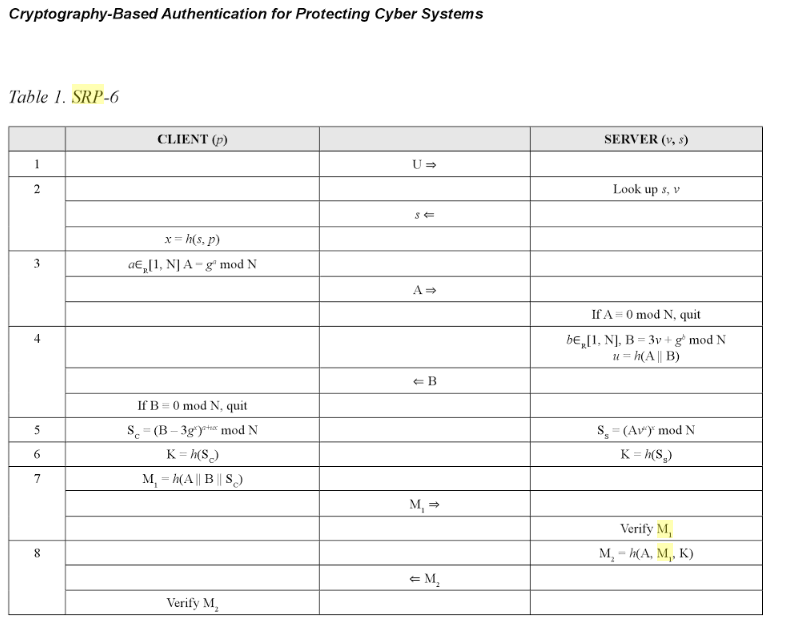
http://srp.stanford.edu/design.html
SRP is the newest addition to a new class of strong authentication protocols that resist all the well-known passive and active attacks over the network. SRP borrows some elements from other key-exchange and identification protcols and adds some subtle modifications and refinements. The result is a protocol that preserves the strength and efficiency of the EKE family protocols while fixing some of their shortcomings.
The following is a description of SRP-6 and 6a, the latest versions of SRP:
N A large safe prime (N = 2q+1, where q is prime)
All arithmetic is done modulo N.
g A generator modulo N
k Multiplier parameter (k = H(N, g) in SRP-6a, k = 3 for legacy SRP-6)
s User's salt
I Username
p Cleartext Password
H() One-way hash function
^ (Modular) Exponentiation
u Random scrambling parameter
a,b Secret ephemeral values
A,B Public ephemeral values
x Private key (derived from p and s)
v Password verifier
The host stores passwords using the following formula:
x = H(s, p) (s is chosen randomly)
v = g^x (computes password verifier)
The host then keeps {I, s, v} in its password database. The authentication protocol itself goes as follows:
User -> Host: I, A = g^a (identifies self, a = random number)
Host -> User: s, B = kv + g^b (sends salt, b = random number)
Both: u = H(A, B)
User: x = H(s, p) (user enters password)
User: S = (B - kg^x) ^ (a + ux) (computes session key)
User: K = H(S)
Host: S = (Av^u) ^ b (computes session key)
Host: K = H(S)
Now the two parties have a shared, strong session key K. To complete authentication, they need to prove to each other that their keys match. One possible way:
User -> Host: M = H(H(N) xor H(g), H(I), s, A, B, K)
Host -> User: H(A, M, K)
The two parties also employ the following safeguards:
